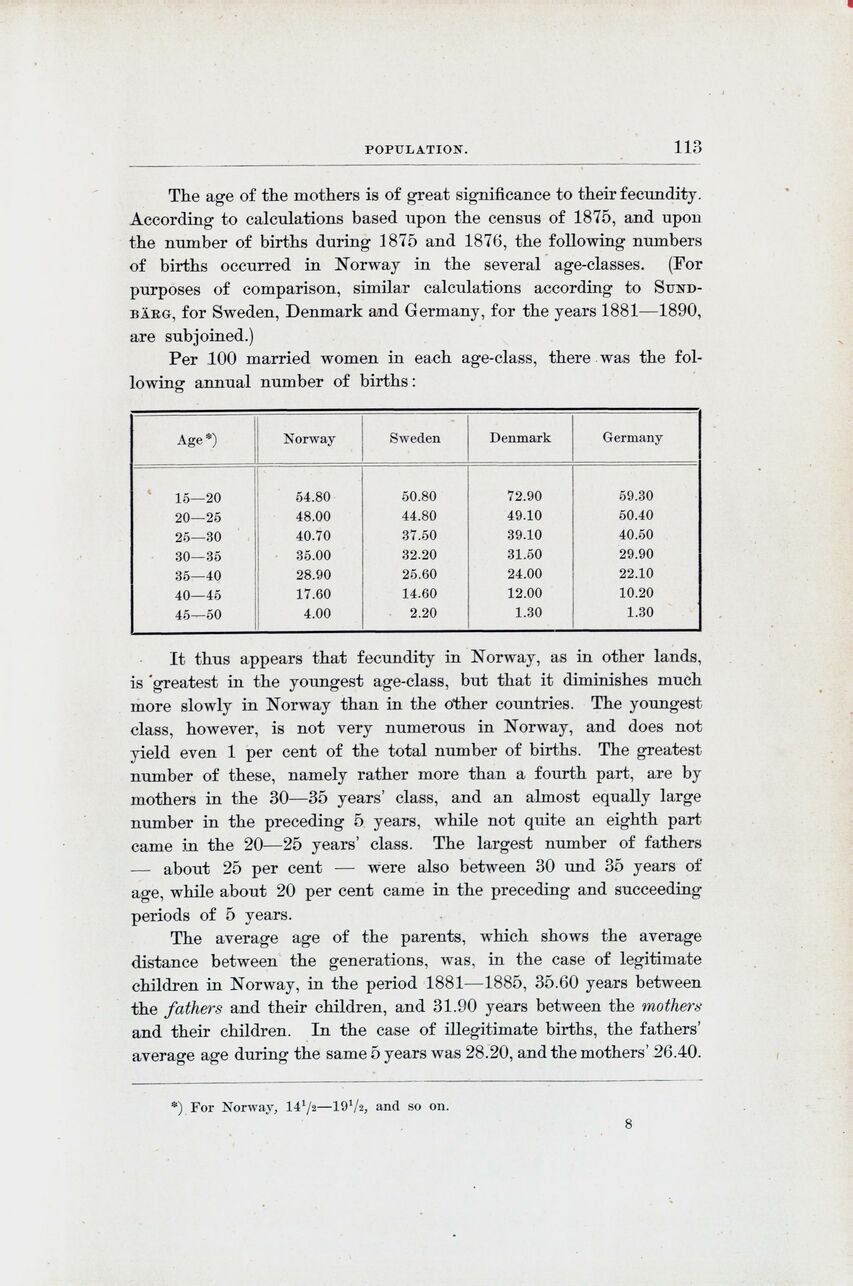
Full resolution (JPEG) - On this page / på denna sida - Population, by G. Amnéus

<< prev. page << föreg. sida << >> nästa sida >> next page >>
Below is the raw OCR text
from the above scanned image.
Do you see an error? Proofread the page now!
Här nedan syns maskintolkade texten från faksimilbilden ovan.
Ser du något fel? Korrekturläs sidan nu!
This page has been proofread at least once.
(diff)
(history)
Denna sida har korrekturlästs minst en gång.
(skillnad)
(historik)
The age of the mothers is of great significance to their fecundity.
According to calculations based upon the census of 1875, and upon
the number of births during 1875 and 1876, the following numbers
of births occurred in Norway in the several age-classes. (For
purposes of comparison, similar calculations according to
Sundbärg, for Sweden, Denmark and Germany, for the years 1881—1890,
are subjoined.)
Per 100 married women in each age-class, there was the
following annual number of births:
| Age[1] | Norway | Sweden | Denmark | Germany |
| 15—20 | 54.80 | 50.80 | 72.90 | 59.30 |
| 20—25 | 48.00 | 44.80 | 49.10 | 50.40 |
| 25—30 | 40.70 | 37.50 | 39.10 | 40.50 |
| 30—35 | 35.00 | 32.20 | 31.50 | 29.90 |
| 35—40 | 28.90 | 25.60 | 24.00 | 22.10 |
| 40—45 | 17.60 | 14.60 | 12.00 | 10.20 |
| 45—50 | 4.00 | 2.20 | 1.30 | 1.30 |
<< prev. page << föreg. sida << >> nästa sida >> next page >>